GasLib—A Library of Gas Network Instances
Abstract
:1. Summary
2. Data Description
2.1. Overview of the Instances
2.1.1. GasLib-11
2.1.2. GasLib-24
2.1.3. GasLib-40
2.1.4. GasLib-134
2.1.5. GasLib-135
2.1.6. GasLib-582
2.1.7. GasLib-4197
2.2. Description of the Data Files
2.2.1. The net File
2.2.2. The cs File
2.2.3. The cdf File
2.2.4. The scn File
3. Outlook
Acknowledgments
Author Contributions
Conflicts of Interest
References
- Evaluating Gas Network Capacities; Koch, T.; Hiller, B.; Pfetsch, M.E.; Schewe, L. (Eds.) SIAM: Philadelphia, PA, USA, 2015. [Google Scholar]
- Pfetsch, M.E.; Fügenschuh, A.; Geißler, B.; Geißler, N.; Gollmer, R.; Hiller, B.; Humpola, J.; Koch, T.; Lehmann, T.; Martin, A.; et al. Validation of nominations in gas network optimization: Models, methods, and solutions. Optim. Methods Softw. 2015, 30, 15–53. [Google Scholar] [CrossRef]
- Ríos-Mercado, R.Z.; Borraz-Sánchez, C. Optimization Problems in Natural Gas Transportation Systems: A State-of-the-Art Review. Appl. Energy 2015, 147, 536–555. [Google Scholar] [CrossRef]
- Fügenschuh, A.; Geißler, B.; Gollmer, R.; Morsi, A.; Pfetsch, M.E.; Rövekamp, J.; Schmidt, M.; Spreckelsen, K.; Steinbach, M.C. Physical and technical fundamentals of gas networks. In Evaluating Gas Network Capacities; Koch, T., Hiller, B., Pfetsch, M.E., Schewe, L., Eds.; SIAM: Philadelphia, PA, USA, 2015; Chapter 2; pp. 17–43. [Google Scholar]
- De Wolf, D.; Smeers, Y. The Gas Transmission Problem Solved by an Extension of the Simplex Algorithm. Manag. Sci. 2000, 46, 1454–1465. [Google Scholar] [CrossRef]
- General Algebraic Modeling System. Available online: http://gams.com (accessed on 1 November 2017).
- Geißler, B.; Martin, A.; Morsi, A.; Schewe, L. The MILP-relaxation approach. In Evaluating Gas Network Capacities; Koch, T., Hiller, B., Pfetsch, M.E., Schewe, L., Eds.; SIAM: Philadelphia, PA, USA, 2015; Chapter 6; pp. 103–122. [Google Scholar]
- Ehrhardt, K.; Steinbach, M.C. Nonlinear Optimization in Gas Networks. In Modeling, Simulation and Optimization of Complex Processes; Bock, H.G., Kostina, E., Phu, H.X., Rannacher, R., Eds.; Springer: Berlin, Germany, 2005; pp. 139–148. [Google Scholar]
- Gugat, M.; Leugering, G.; Martin, A.; Schmidt, M.; Sirvent, M.; Wintergerst, D. MIP-Based Instantaneous Control of Mixed-Integer PDE-Constrained Gas Transport Problems. Comput. Optim. Appl. 2017. [Google Scholar] [CrossRef]
- Hante, F.M.; Schmidt, M. Complementarity-Based Nonlinear Programming Techniques for Optimal Mixing in Gas Networks; Technical Report; FAU Erlangen-Nürnberg: Erlangen, Germany, 2017; Available online: http://www.optimization-online.org/DB_HTML/2017/09/6198.html (accessed on 29 November 2017).
- Humpola, J. Gas Network Optimization by MINLP. Ph.D. Thesis, Technische Universität Berlin, Berlin, Germany, 2014. [Google Scholar]
- Borraz-Sánchez, C.; Bent, R.; Backhaus, S.; Hijazi, H.; van Hentenryck, P. Convex Relaxations for Gas Expansion Planning. INFORMS J. Comput. 2016, 28, 645–656. [Google Scholar] [CrossRef]
- Mak, T.W.K.; Van Hentenryck, P.; Zlotnik, A.; Hijazi, H.; Bent, R. Efficient Dynamic Compressor Optimization in Natural Gas Transmission Systems; Technical Report; 2015; Available online: https://arxiv.org/abs/1511.07562 (accessed on 29 November 2017).
- Groß, M.; Pfetsch, M.E.; Schewe, L.; Schmidt, M.; Skutella, M. Algorithmic Results for Potential-Based Flows: Easy and Hard Cases; Technical Report; 2017; Available online: http://www.optimization-online.org/DB_HTML/2017/08/6185.html (accessed on 29 November 2017).
- Habeck, O.; Pfetsch, M.E.; Ulbrich, S. Global Optimization of ODE Constrained Network Problems on the Example of Stationary Gas Transport. Available online: http://www.optimization-online.org/DB_HTML/2017/10/6288.html (accessed on 29 November 2017).
- DESFA. Available online: http://www.desfa.gr (accessed on 1 November 2017).
- Sirvent, M.; Kanelakis, N.; Geißler, B.; Biskas, P. Linearized model for optimization of coupled electricity and natural gas systems. J. Mod. Power Syst. Clean Energy 2017, 5, 364–374. [Google Scholar] [CrossRef]
- Gugat, M.; Leugering, G.; Martin, A.; Schmidt, M.; Sirvent, M.; Wintergerst, D. Towards Simulation Based Mixed-Integer Optimization with Differential Equations; Technical Report; FAU Erlangen-Nürnberg: Erlangen, Germany, 2016; Available online: http://www.optimization-online.org/DB_HTML/2016/07/5542.html (accessed on 29 November 2017).
- Schmidt, M.; Sirvent, M.; Wollner, W. A Decomposition Method for MINLPs with Lipschitz Continuous Nonlinearities; Technical Report; 2017; Available online: http://www.optimization-online.org/DB_HTML/2017/07/6130.html (accessed on 29 November 2017).
- Hiller, B.; Hayn, C.; Heitsch, H.; Henrion, R.; Leövey, H.; Möller, A.; Römisch, W. Methods for verifying booked capacities. In Evaluating Gas Network Capacities; Koch, T., Hiller, B., Pfetsch, M.E., Schewe, L., Eds.; SIAM: Philadelphia, PA, USA, 2015; Chapter 14; pp. 291–315. [Google Scholar]
- Schmidt, M.; Steinbach, M.C.; Willert, B.M. High detail stationary optimization models for gas networks: Validation and results. Optim. Eng. 2016, 17, 437–472. [Google Scholar] [CrossRef]
- Rose, D.; Schmidt, M.; Steinbach, M.C.; Willert, B.M. Computational optimization of gas compressor stations: MINLP models versus continuous reformulations. Math. Methods Oper. Res. 2016, 83, 409–444. [Google Scholar] [CrossRef]
- Burlacu, R.; Geißler, B.; Schewe, L. Solving Mixed-Integer Nonlinear Programs Using Adaptively Refined Mixed-Integer Linear Programs; Technical Report; FAU Erlangen-Nürnberg: Erlangen, Germany, 2017; Available online: https://opus4.kobv.de/opus4-trr154/frontdoor/index/index/docId/151 (accessed on 29 November 2017).
- Hennig, K.; Schwarz, R. Using Bilevel Optimization to find Severe Transport Situations in Gas Transmission Networks; Technical Report 16-68; Zuse Institute Berlin (ZIB): Berlin, Germany, 2016. [Google Scholar]
- Geißler, B.; Morsi, A.; Schewe, L.; Schmidt, M. Solving power-constrained gas transportation problems using an MIP-based alternating direction method. Comput. Chem. Eng. 2015, 82, 303–317. [Google Scholar] [CrossRef]
- Geißler, B.; Morsi, A.; Schewe, L.; Schmidt, M. Solving Highly Detailed Gas Transport MINLPs: Block Separability and Penalty Alternating Direction Methods. INFORMS J. Comput. 2017. Available online: http://www.optimization-online.org/DB_HTML/2016/06/5523.html (accessed on 30 November 2017).
- Extensible Markup Language (XML). Available online: https://www.w3.org/XML/ (accessed on 16 November 2017).
- W3C XML Schema Definition Language (XSD). Available online: https://www.w3.org/TR/xmlschema11-1/ (accessed on 16 November 2017).
- Schmidt, M.; Steinbach, M.C.; Willert, B.M. The precise NLP model. In Evaluating Gas Network Capacities; Koch, T., Hiller, B., Pfetsch, M.E., Schewe, L., Eds.; SIAM: Philadelphia, PA, USA, 2015; Chapter 10; pp. 181–210. [Google Scholar]
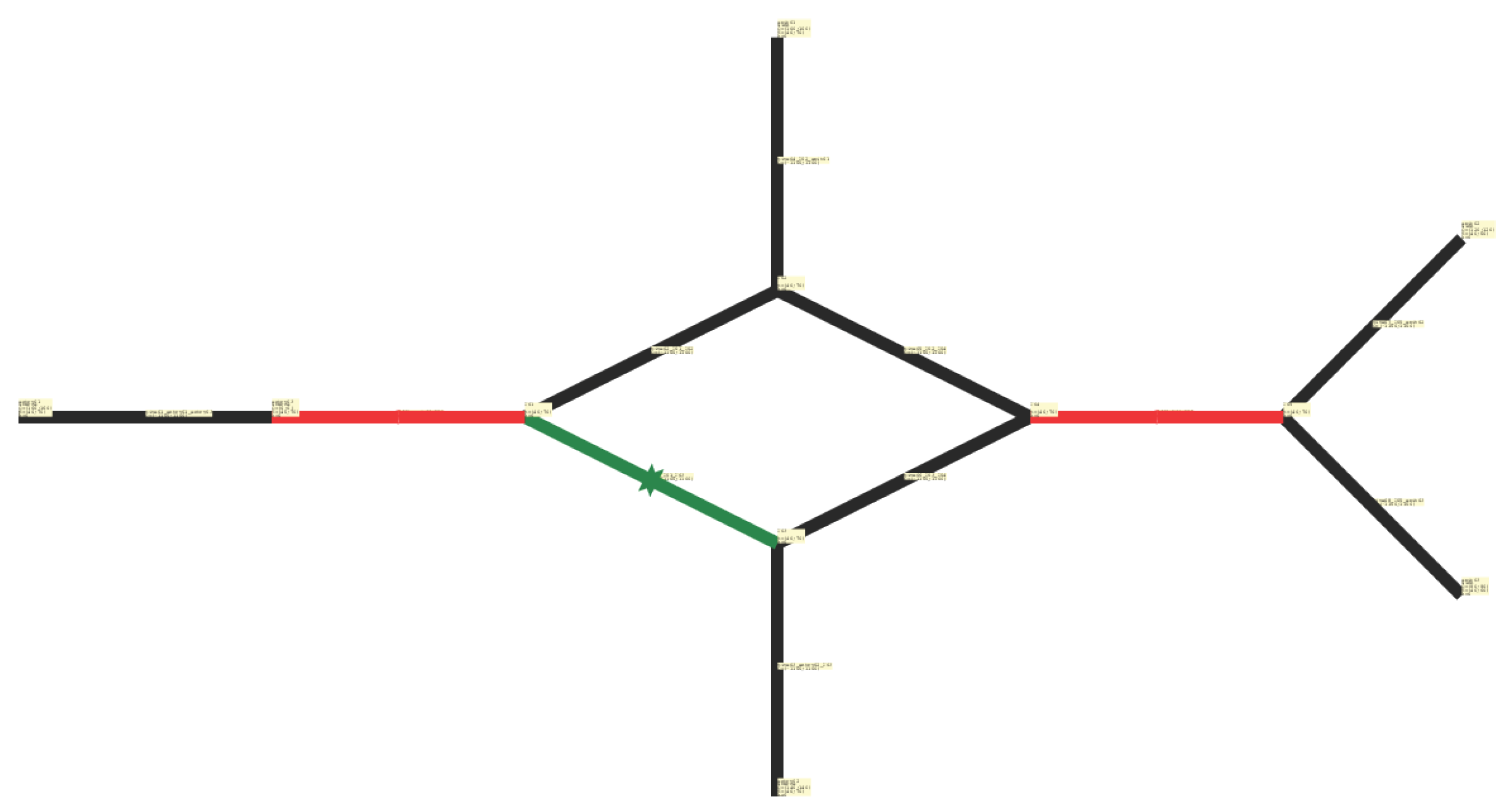


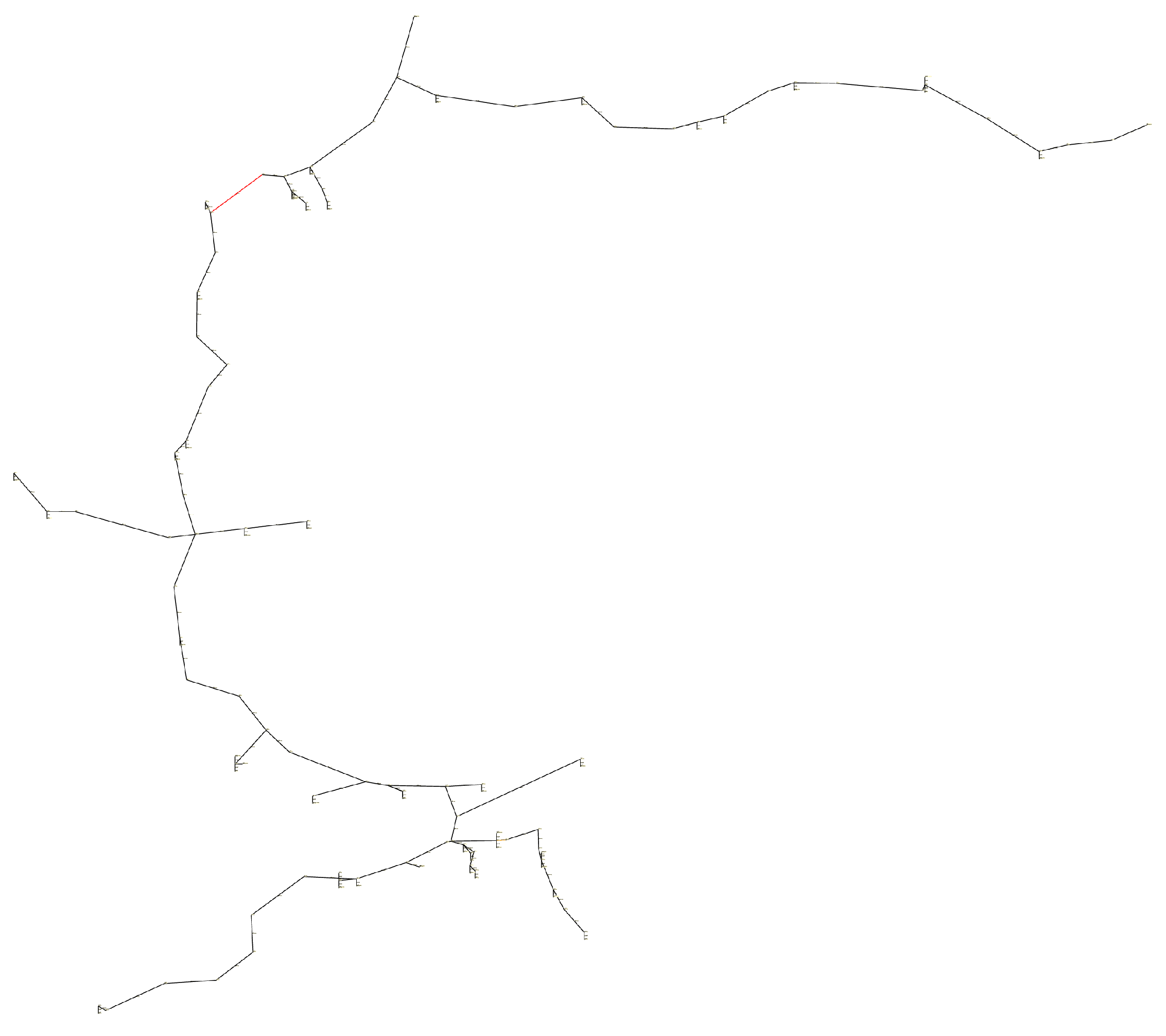

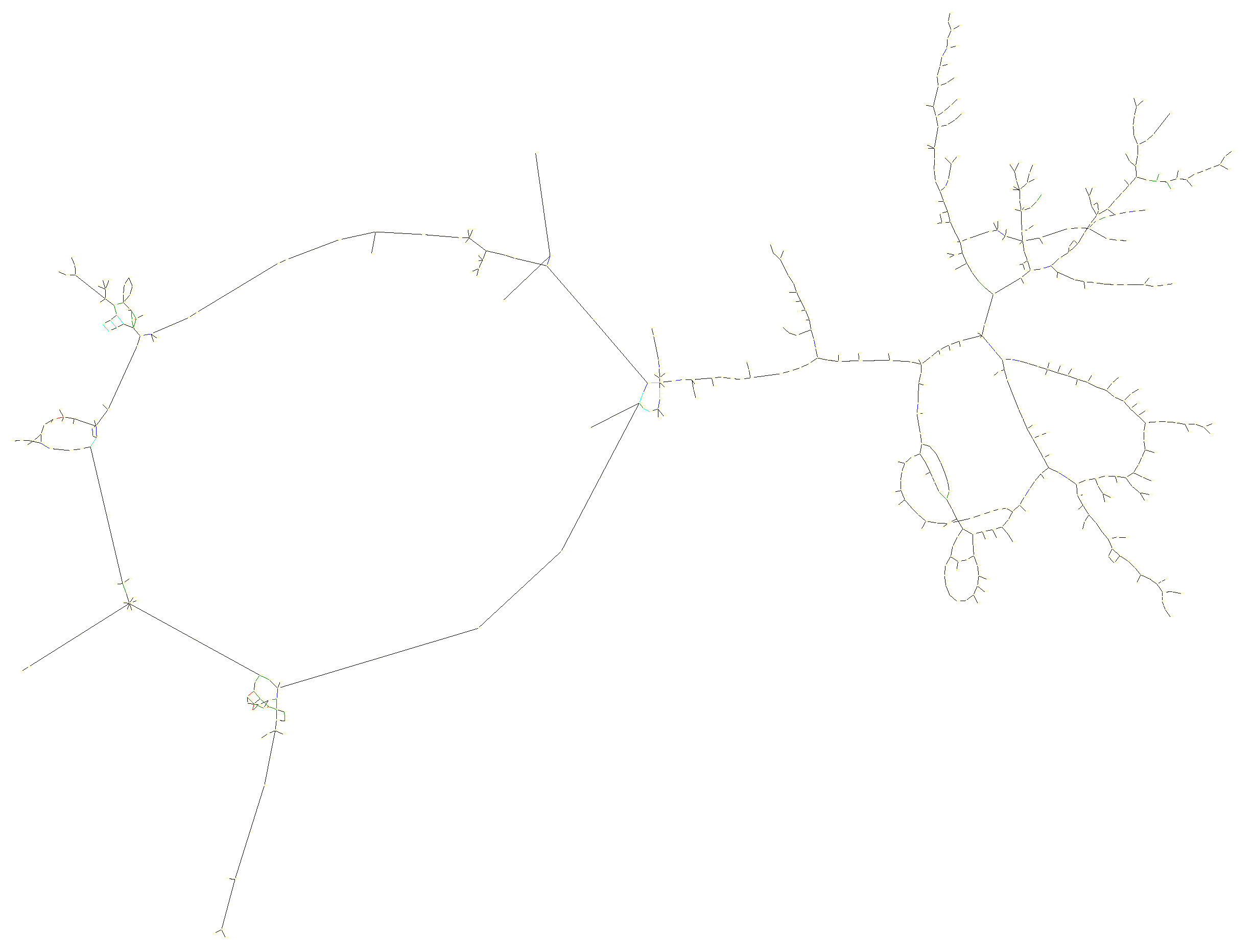
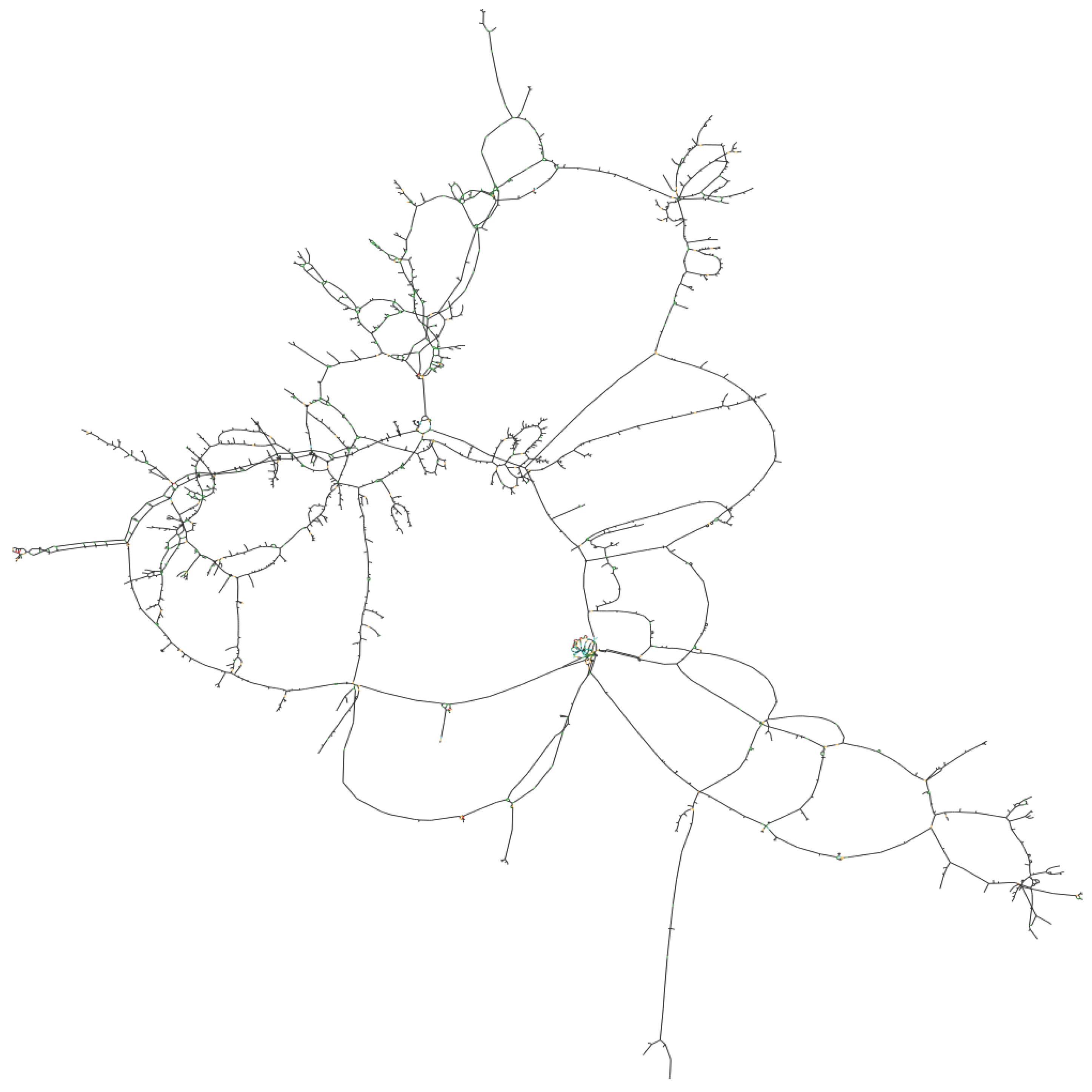
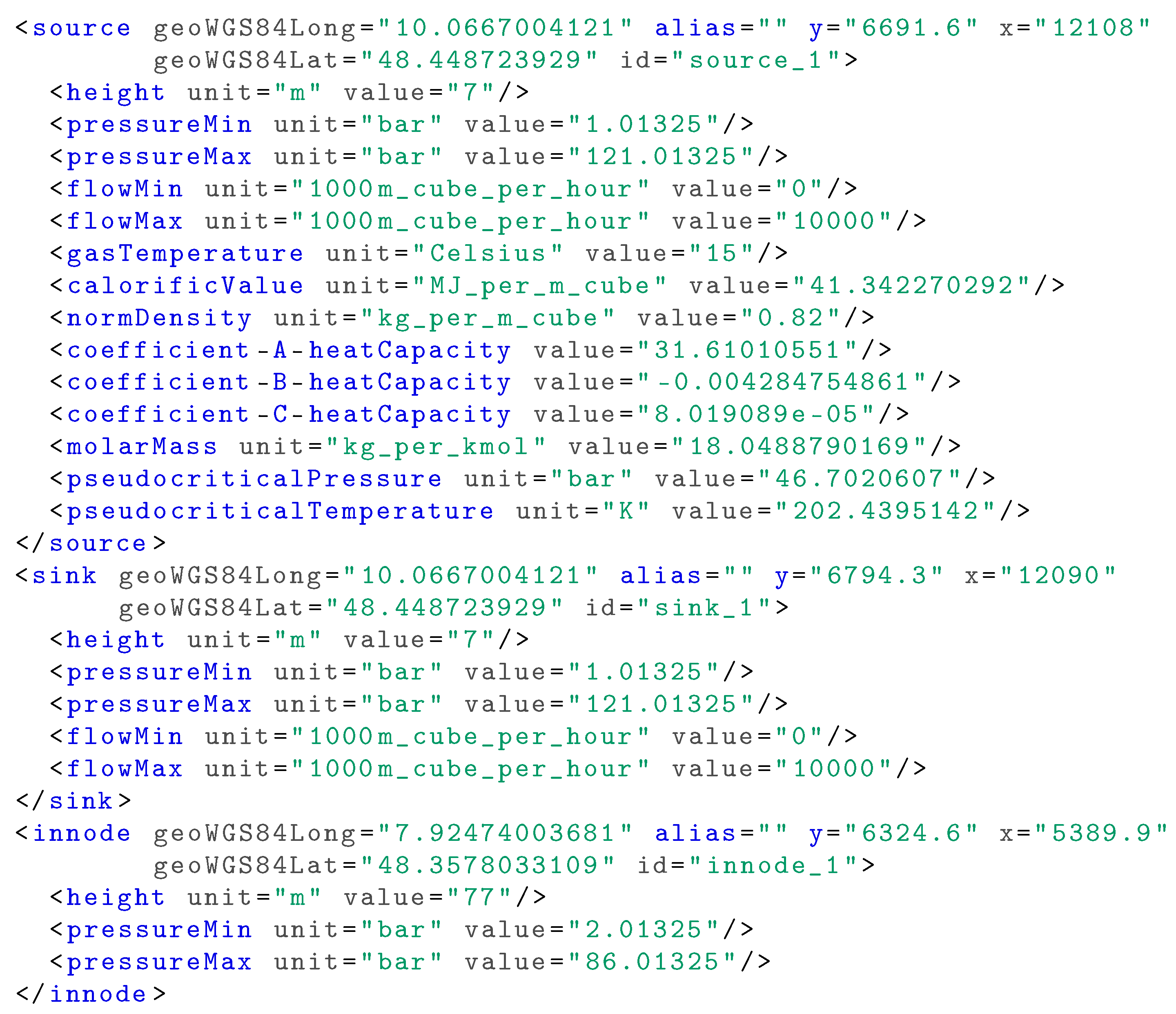




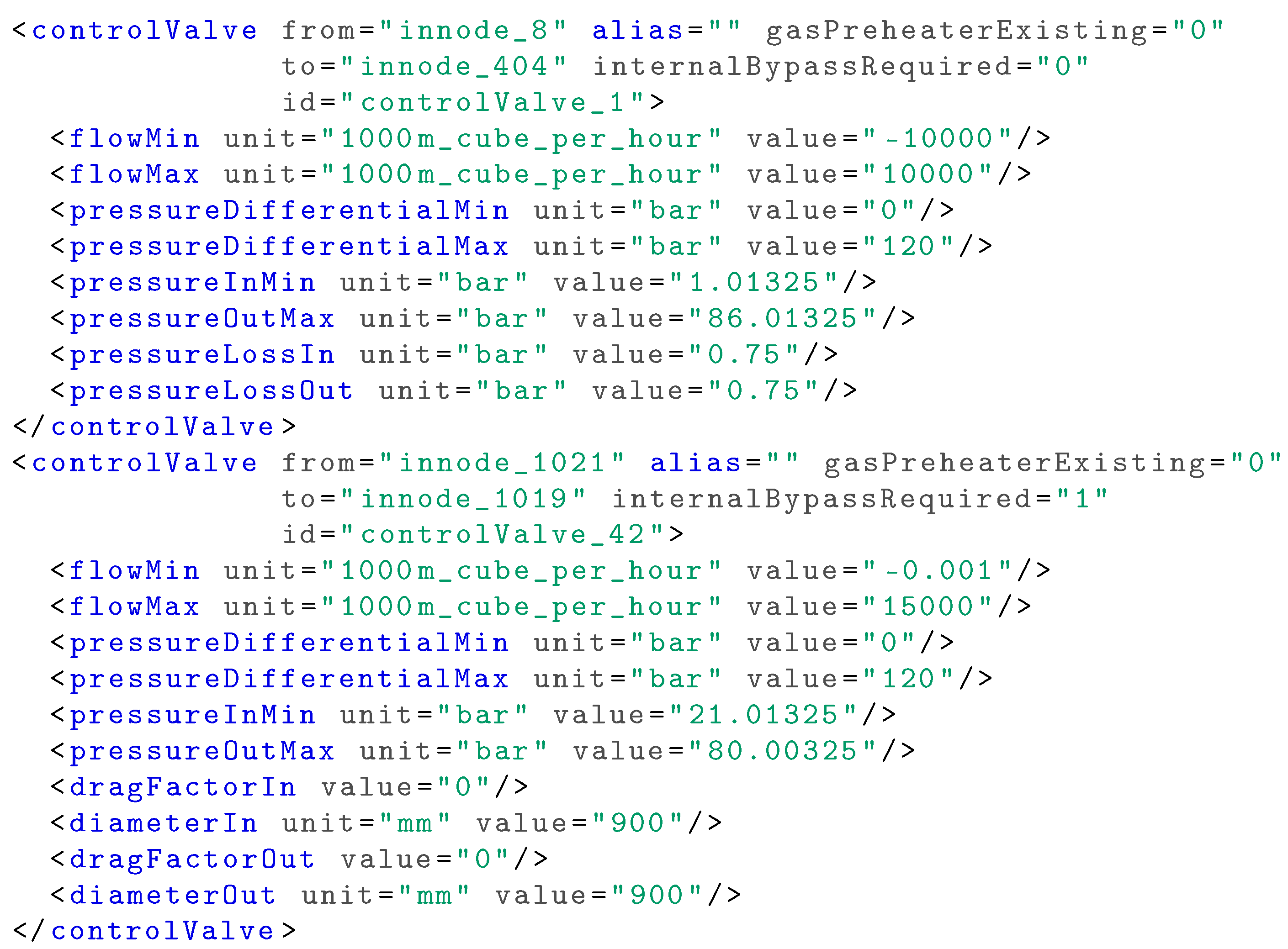
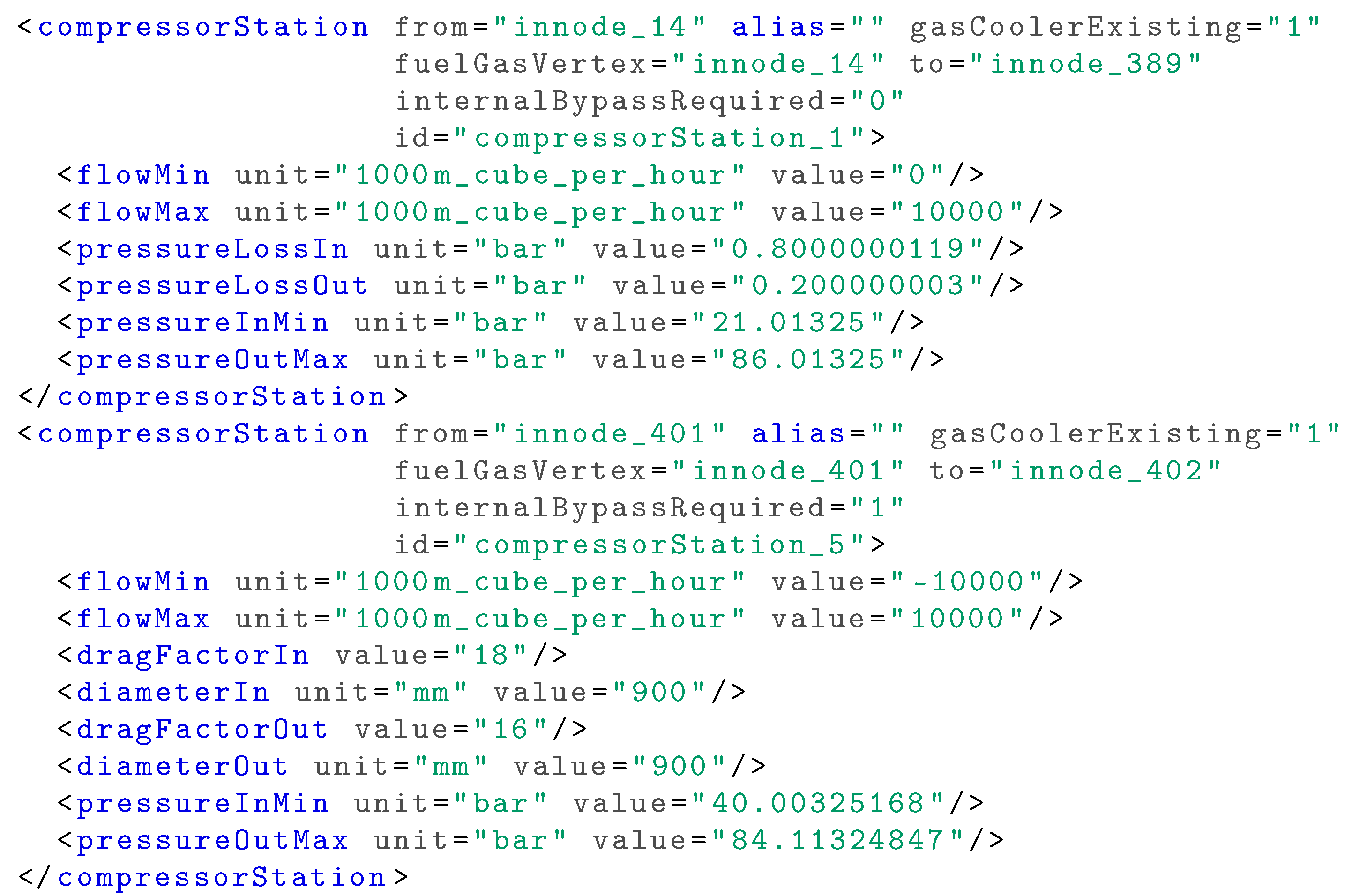
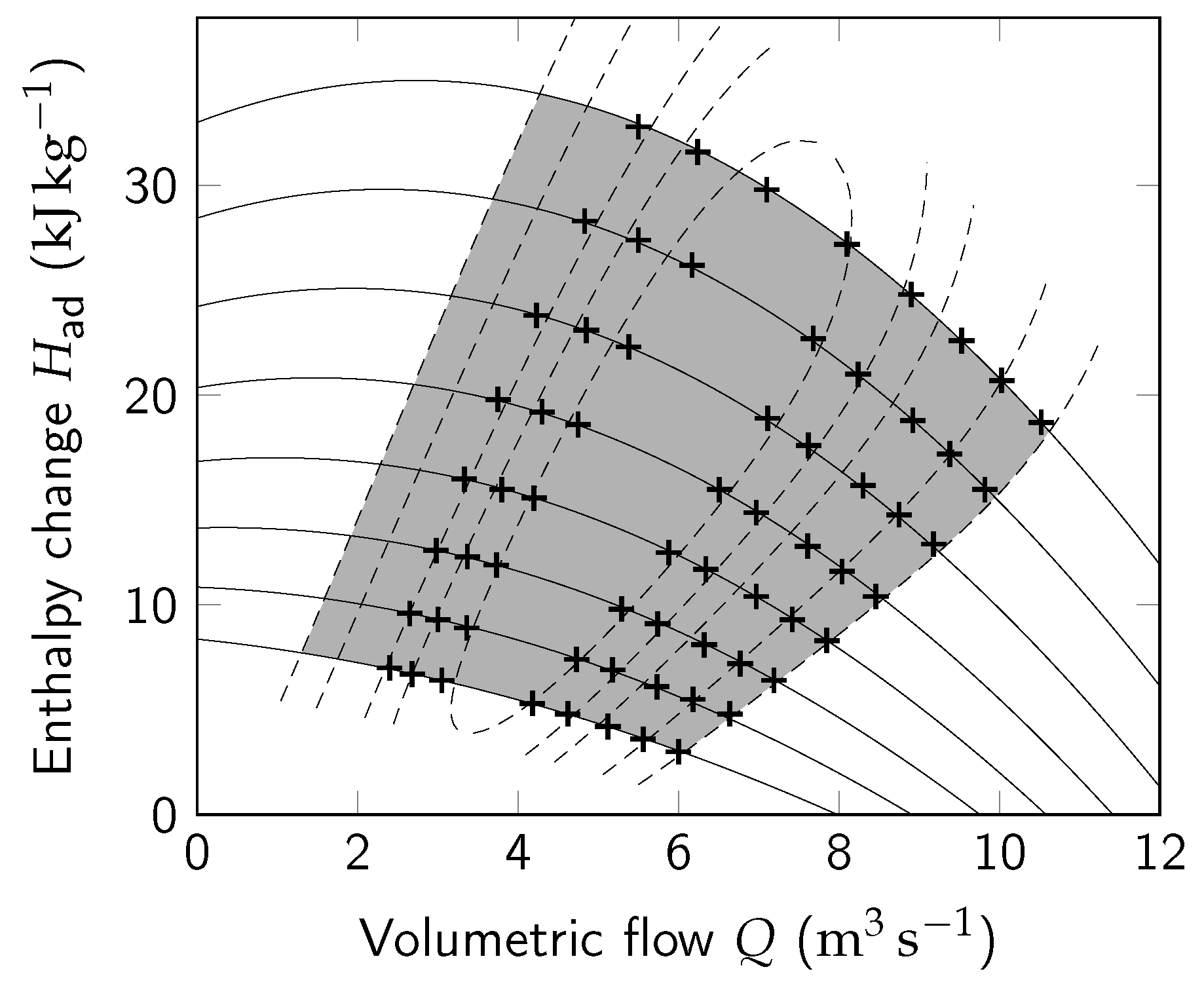
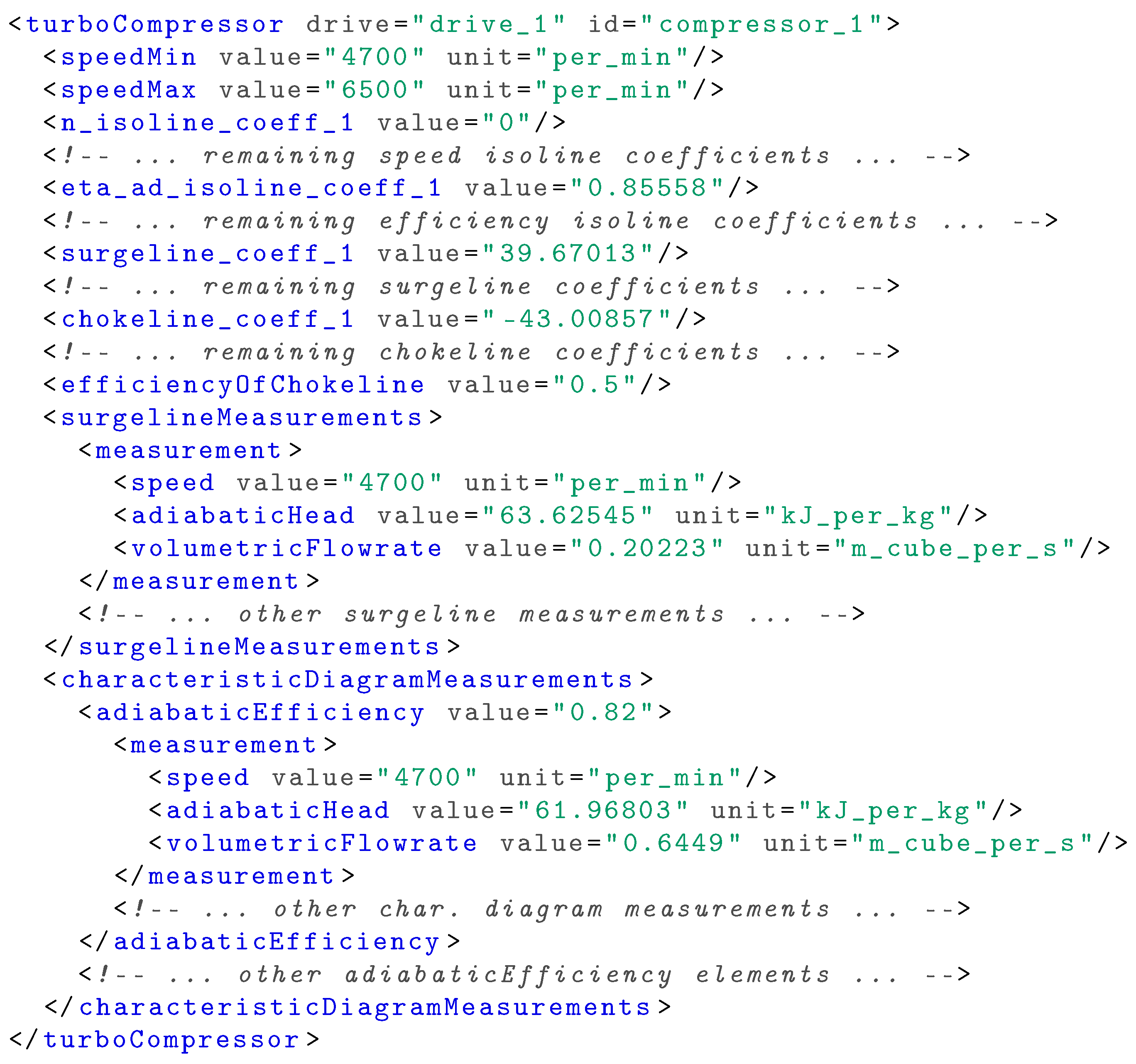

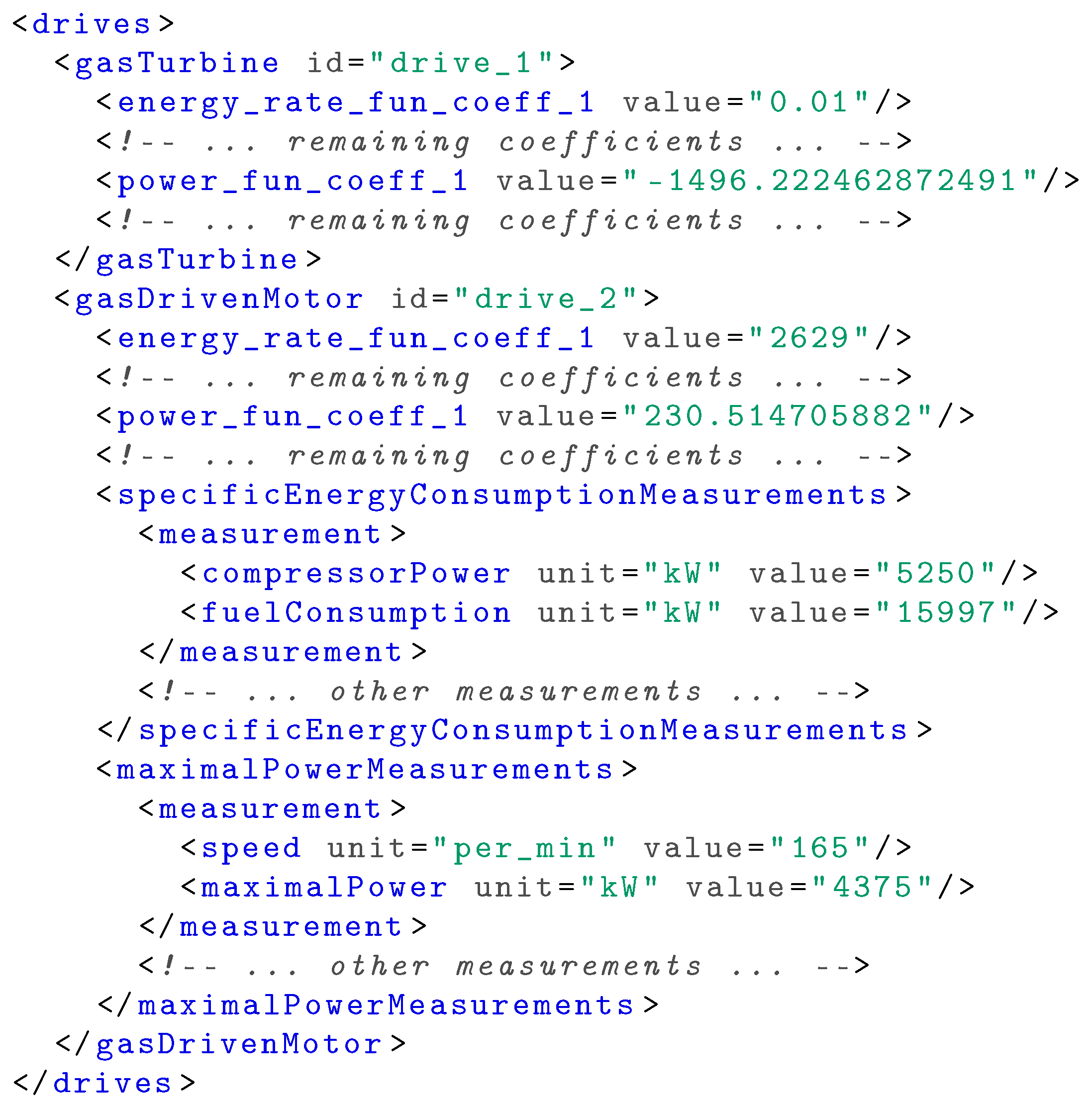
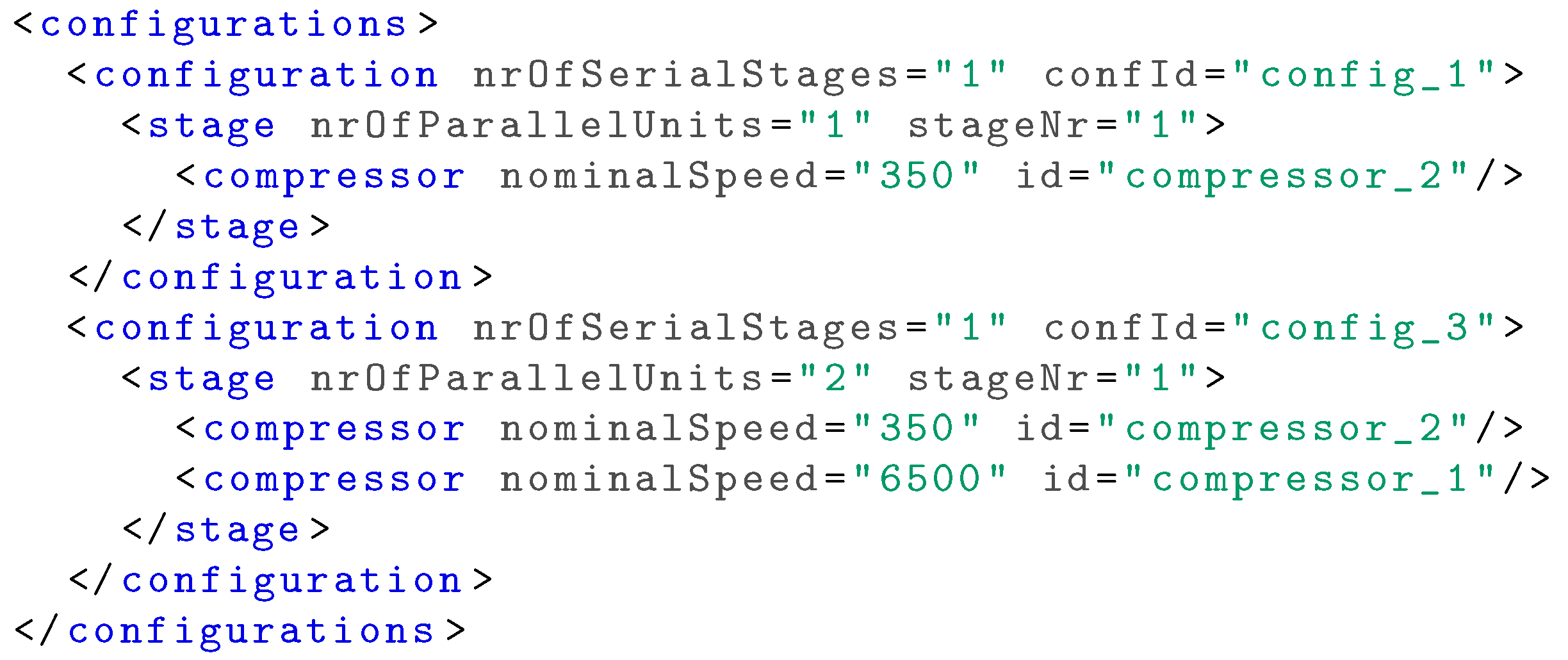
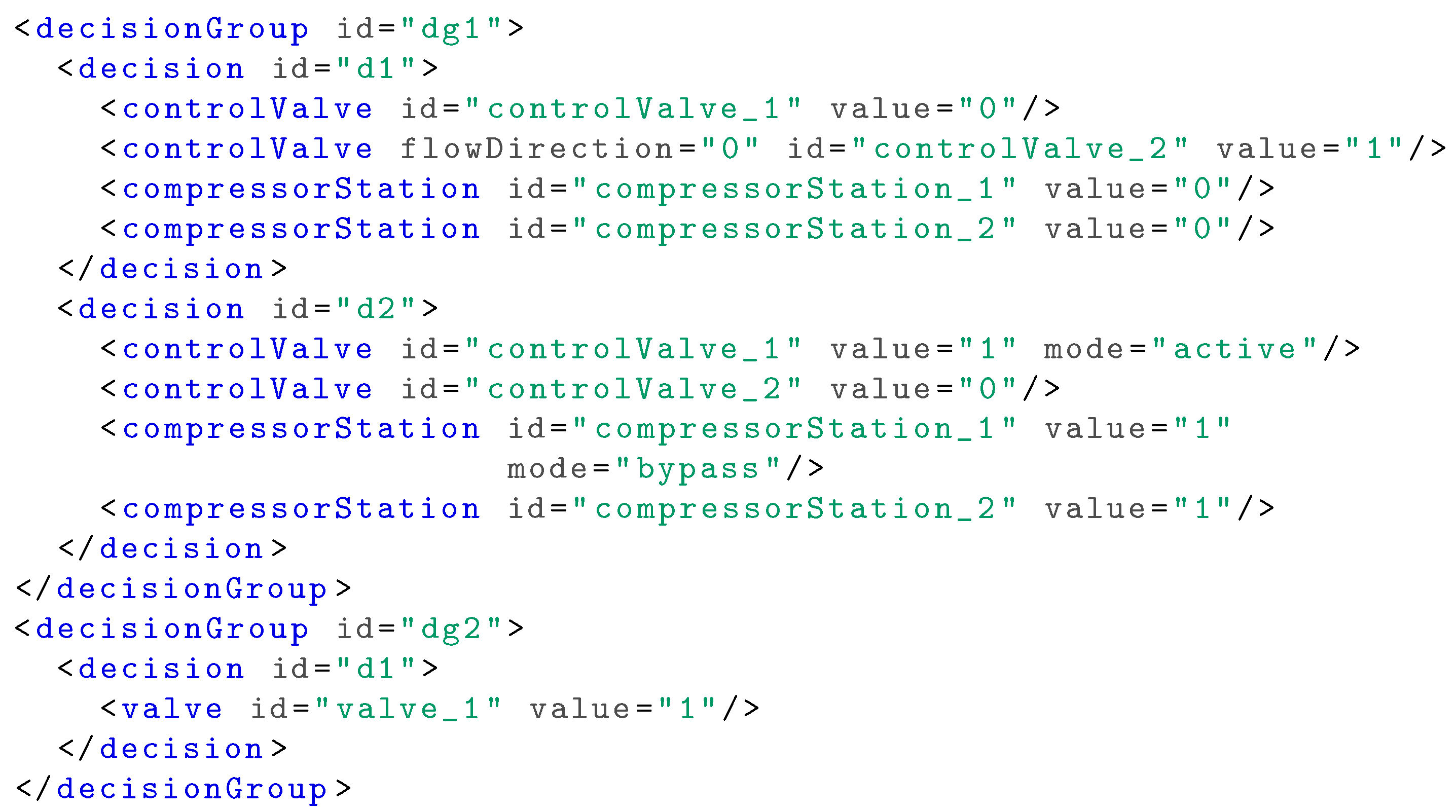

| Physical/Technical Quantity | Units |
|---|---|
| Gas flow | , , 1000 , … |
| Gas temperature | C, , … |
| Length | , , , , … |
© 2017 by the authors. Licensee MDPI, Basel, Switzerland. This article is an open access article distributed under the terms and conditions of the Creative Commons Attribution (CC BY) license (http://creativecommons.org/licenses/by/4.0/).
Share and Cite
Schmidt, M.; Aßmann, D.; Burlacu, R.; Humpola, J.; Joormann, I.; Kanelakis, N.; Koch, T.; Oucherif, D.; Pfetsch, M.E.; Schewe, L.; et al. GasLib—A Library of Gas Network Instances. Data 2017, 2, 40. https://doi.org/10.3390/data2040040
Schmidt M, Aßmann D, Burlacu R, Humpola J, Joormann I, Kanelakis N, Koch T, Oucherif D, Pfetsch ME, Schewe L, et al. GasLib—A Library of Gas Network Instances. Data. 2017; 2(4):40. https://doi.org/10.3390/data2040040
Chicago/Turabian StyleSchmidt, Martin, Denis Aßmann, Robert Burlacu, Jesco Humpola, Imke Joormann, Nikolaos Kanelakis, Thorsten Koch, Djamal Oucherif, Marc E. Pfetsch, Lars Schewe, and et al. 2017. "GasLib—A Library of Gas Network Instances" Data 2, no. 4: 40. https://doi.org/10.3390/data2040040





